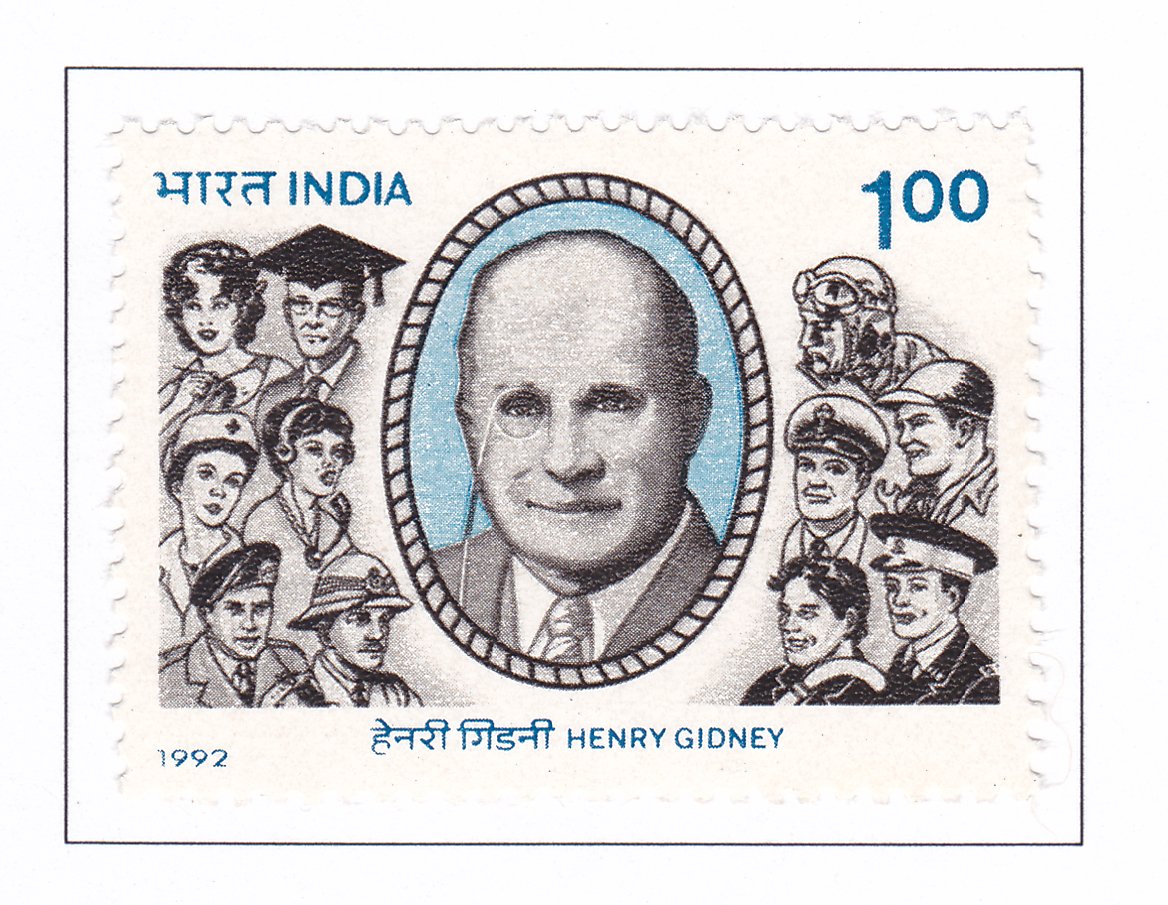Henry Gidney (1873-1942)

Technical Data
| Date of Issue | July 9, 1992 |
|---|---|
| Denomination | Rs. 1 |
| Quantity | 600,000 |
| Perforation | comb 13½ x 13 |
| Printer | Security Printing Press, Nashik |
| Watermark | No Watermark |
| Colors | Black | Light blue |
| Catalog Codes |
Michel IN 1353 Stamp Number IN 1410 Yvert et Tellier IN 1151 Stanley Gibbons IN 1503 |
| Themes | Anniversaries and Jubilees | Famous people | Men | Physicians |
Table of Contents
Henry Albert John Gidney: Commemorative Stamp
Henry Albert John Gidney, born on July 9, 1873, in Jgatpuri, Maharashtra, was a distinguished figure in medicine and advocacy. His contributions span across medical achievements and significant efforts to uplift the Anglo-Indian community.
Career Highlights:
- Early Life and Education: At 16, Gidney joined the Calcutta Medical College, where he excelled academically, graduating in First Class with gold medals.
- Medical Career: By 37, Gidney had achieved notable professional milestones, including FRCS, DPH, MRCP, D.O., and was a research scholar and Lecturer in Ophthalmology at Oxford. He served as a Lieutenant Colonel in the Indian Army’s Medical Service during World War I, later resigning to pursue private practice. Over his career, he conducted approximately 30,000 eye operations.
- Advocacy and Leadership: Gidney was a vocal advocate against racial discrimination faced by the Anglo-Indian community. He led the Anglo-Indian and Domiciled European Association and was a prominent member of the Central Legislative Assembly from 1921. His efforts were crucial in securing increased political representation, educational safeguards, and job reservations for Anglo-Indians. He was knighted in 1931.
Contributions to Anglo-Indian Community:
- Political Representation: Gidney’s forceful representations before the Simon Commission (1928-29) and participation in the Round Table Conferences (1930-32) were pivotal in improving the conditions and representation of the Anglo-Indian community.
- Community Leader: Known for his charm and wit, Gidney was a respected raconteur and influential figure in Delhi’s society and legislature. His message to his community as India neared independence was one of unity and pride in being “sons of India.”
Stamp and First Day Cover:
- Design and Artwork: The stamp and First Day Cover feature a portrait of Henry Gidney alongside representations of various professions of Anglo-Indians. The designs were prepared by Sydney Kitson with artwork by Ahmed Ali. Paul Mantosh, a former M.P., coordinated the collection of materials for the stamp design, and the cancellation was designed by Alka Sharma.
Gidney’s legacy as a leader and advocate for the Anglo-Indian community remains significant, reflecting his commitment to both his profession and his community. He passed away on May 5, 1942, in New Delhi.
